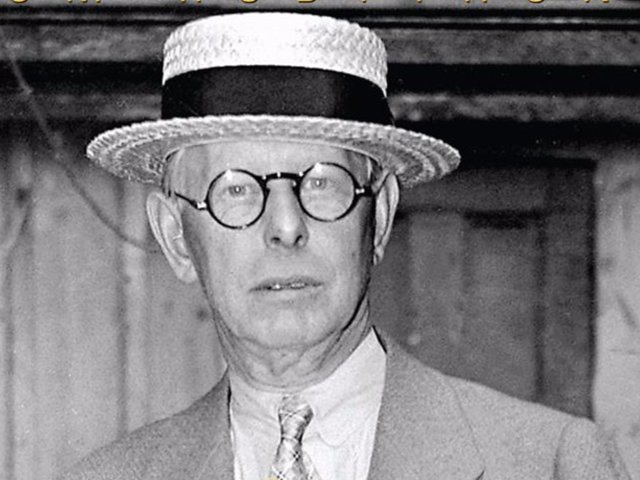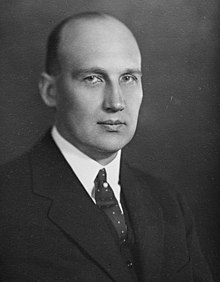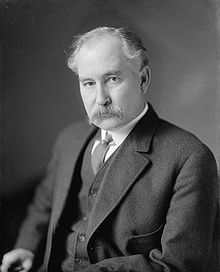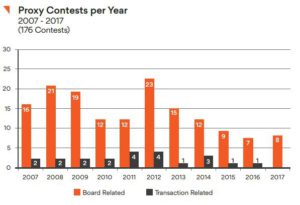Brisbane Courier (Qld. : 1864 – 1933), Saturday 1 December 1923, page 19
By A. MESTON.
Few people have any knowledge of the vast amount of works, reports, and papers that have been written on the anthropology, ethnology, and geological history of the aboriginals of Australia and Tasmania.
Many of the books are rare, and many of the reports and papers are found only in scientific journals not accessible to the general public. Much valuable information is hidden away in the Journal of the Royal Anthropological Institute of Great Britain. Scores of papers, memoirs, and vocabularies are scattered over works of travel and exploration, and the trans-actions of scientific societies. About four hundred books and papers are catalogued, but there are not many complete books, and even all those are not standard authorities.
The late Robert Etheridge, junior of the Sydney Museum, in his valuable catalogue issued by the Mines Department of New South Wales when Sydney Smith was Minister, quotes Brough Smyth, J. D. Woods, G. Taplin, Fison and Howitt, William Ridley. Captain Sadleir, E. M. Curr, James Bonwick, J Dawson, and Dr. Topinard as among the best of the writers.
He omits one of the most important of all, L. E. Threlkeld, who was 14 years missionary among the blacks of Port Macquarie, and wrote a masterly work on the Awabakal dialect, the most complete of all recorded vocabularies, and the best explanation of the grammatical structure of any Australian dialect.
It was published in 1850. The people who spoke that Awabakal are long since extinct, and there are not many living blacks to-day who can speak much of even the once great Kamilroi, Wiradjerie, and Jucumbah (Yucumbah) dialects of New South Wales. Tribes after tribes have vanished, and their dialects have gone with them into oblivion.
Among the old Moreton Bay tribes there were seven dialects spoken, and they are all practically extinct. In my lifetime I have seen tribe after tribe disappear, one dialect after another become extinct, until there is hardly a soul left of the people who spoke the dialects familiar to me in my youth. The tribes of Moreton, Bribie, and Stradbroke Islands have gone forever, and all that is left of their dialects, presumedly, is what was taken down by me in 1870 and 1874. On Stradbroke Island there are still some half castes and quadrooms who speak part of the old Coobennpil dialect, but with them and even that will disappear, so that white people in the last short period of 30 years have seen whole aboriginal tribes and their languages passing silently away from us, like a series of dissolving views, into Eternity. It seems to me to be a scene so solemn, and tragic, and pathetic, as to be capable of exciting pity in the hardest hearted and serious reflections in the most thoughtless. When the Roman spies found Marius sitting among the ruins of Carthage he said to them. “Some day Rome may be like Carthage!” In some unknown future, where Brisbane stands, may be desolate as the sand dunes of Moreton Island, mighty cities of past ages lie hidden by the sands of the desert.
SOFT AND EUPHONIOUS SPEECH.
And they were so soft and euphonious, those old Moreton Bay dialects, that it was a pleasure to hear them spoken, especially by the women and children Our language is discordant by comparison.
You ask a Moreton Islander, “Where are you going,” and in a soft voice he would ask you “Wanyeegneen yanumba?” You say, “I don’t know,” and he merely replies “wanyeenggam.” You ask him, “Where are all the blacks?” expressed by him as “wanyee dan mah-gee?”
You ask him, “Where is the death adder?” and he would softly say it as “wanyee moonoom.” He called the native bee “cooneeda,” which recalls that beautiful poem of Essex Evans on the “Cymru,” and “the spirit of stern Cuneida, the last of the Brython Kings.” At Sydney rain was banna, and it was rain at Moreton Bay, reappearing as rain again at Cairns. At Moreton Bay the small pathway from the small to the big Bora circle was boreen, and boreen was a small crooked foot track in the Irish Gaelic. At Townsville the word for white was “alba,” pure Latin. Com-parative philology shows a considerable number of aboriginal words in English, Gaelic, Italian, Hebrew, Hindustani, and broad Scottish, in some cases, with exactly the same meaning, but all that proves nothing.
Stanley records “wee” for five in Central Africa, and it was the word for five at Bundaberg and Rockhampton. A word in one dialect may have quite a different meaning in another. At Moreton Bay, one, two, three, four were canyahra, boollah, tiyarra, mahjan. From Townsville to Cooktown canyahra was the crocodile. There was an amazing flexibility in the language ; and an astonishing modification of the verbs by the use of suffixes and affixes, so that one word would express three or four of ours. In the first dialect spoken by me, the Yoocumbah of the Clarence, the generic name of the race was Murri, a man was murri, a young man murriwan, a boy murriwanjin, a woman murri-wanggeen, a girl murriwanggeena.
In the Ahwabah dialect, ahwa was no, ahwa-bah the place where ahwa was no, and also the language itself, while ahwabbakal was the race who spoke that language, and the men of that race, while the women were ahwabbakaleen, the girls ahwabbakaleena. Our language has no such flexibility as that. Their nouns show the nominative, genitive, ablative, dative, accusative cases, and in addition to the remarkable inflection of the verbs they show the indicative, imperative, potential, and subjunctive moods, and past, present, and future tenses.
Usually the adjective followed the noun, as in French and Italian. An Italian, instead of saying a white horse, says “un cavallo bianca,” a horse white. And the aboriginal is as likely to ask where are you going, as you where going, or you going where? The verb is often omitted, especially with the interrogative adverb, such as “minta into ginda-hnya? what you laught at? and not what are you laughing at? If asking a Coobenmpil speaking man of Stradbroke Island to have a drink, I would say to him, “gnaleen yieeba jaleeba maroomba, literally “we together drink good.” A short toast would be simply “jaleeba maroomba,” or “drink good,'” much more euphonious than most of our meaningless toasts.
DIFFICULTY OF TRANSLATING.
To show the effect of translating, and the difficulty of expressing the same sense, I shall give here the Lord’s Prayer in the Coobennpil dialect to show how it reads:
Come down to us: Bulka gnaleeba.
We do here what they do up there: Yaganna gnallee noonam tamanna,
To-day give us bread: Bayann, woodya gnalleegannoo binggin
Forgive us this time: Wallee gnalleegnanna banmal,
Don’t lead us to do wrong: Wallee gnalleegnanna waleemal,
Take us away from bad: Yandeegee gnalleegnanna waleenjee.
You are great, all is yours: Gnareeba nanamm, cooroomba beera, Coobaggoolabbo! (For ever!)
The reader is asked to pronounce the g and u always hard and short, as in gun.
Very surprising is the difference of the dialects of Moreton and Stradbroke Islands, separated only by a narrow channel, which probably had no existence at all 200 years ago ; but it is well to re-member that the Rhine, in Germany, and the Tweed, in Scotland, separate two languages, that there are four different languages in the small island of Britain Welsh, English, Gaelic, Lowland Scottish, really old Saxon, and a number of uncouth English dialects.
DIFFERING DIALECTS.
The aboriginal dialects differed widely from each other, some having a much more copious vocabulary than others, and, as in the case of ourselves, the average man only spoke a fraction of his own language, which not being fixed by printing and books, was frequently changing. Even literature fails to fix a language, for the English of Chaucer and Spenser would not be understood by the Australians of to-day.
On Moreton Island the aboriginal race was Mahgee, and on Stradbroke Mullara. North of Caboolture and thence to the Mary River, the race was Dahn. A fire-stick at Brisbane was chucabbil, at Stradbroke tucabbin, at Moreton weeramm, and north of Caboolture carba. At grand corroborees, great fights, or feasts of the Bunya, the various tribes camped apart, but there was a certain volapuk dialect by which tribes speaking different dialects could understand each other. In ordinary conversation today among the white race the average man or woman does not use more than from 100 to 200 words. No civilised man knows half of his own language. Usually an aboriginal could speak his own language, and the two adjoining dialects. As with us, there were some who were much more complete linguists and eloquent speakers than the others. If a Brisbane black took a Nerang Creek woman for a wife, she had to learn Wacca, and the children were brought up in that dialect, but they usually learned the language of the mother. If a boy or girl had a tendency to talk in a loud or harsh voice, loud calls of “no more black cockatoo,” or “no more leatherhead,” or “too much kookaburra,” or “you talk like a crow,” killed the harsh voice with ridicule, and ridicule with them was a deadly weapon. At the camp fire, riddles were a favourite pastime, and some were very ingenious. On Stradbroke, among those recorded by me, was one where a man had a boy who was a mischievous little rascal. His father had made a new boomerang, and one day when going out hunting he put it up in the fork of a tree, and warned his son not to touch it. Of course, the son assured him that nothing was farther from his thoughts, and when dad was out of sight he promptly climbed the tree, got the boomerang, walked down to the beach, and threw it away towards the West. The boomerang went away out of sight, and did not return for about four weeks! Great guessing in the camp, and sarcastic suggestions that the narrator was a splendid liar, until he explained that the boomerang was “Gillenn,” the new moon, and then there was hilarious laughter.
There were orators among them, eloquent men, capable of highly dramatic declamation, and they were listened to with rapt attention, in profound silence. There were no cheers, interjections, or in-terruptions. Ridley tells of a wonderful speech he heard from an old Kamilroi black on the wrongs of his race, and I heard two unforgettable orations on the same subject.
In voice and gesture savage Nature, spoke, and from their eyes the gladiator broke.
And now that ancient race of hunters and athletes, their soft melodious speech, their picturesque customs, their interesting and original weapons, their songs, dances, and traditions, are soon to be hidden in the closing mists of a dead, forgotten past, apparently the ultimate doom of all humanity, for such is the inexorable “Testimony of the Rocks.”























